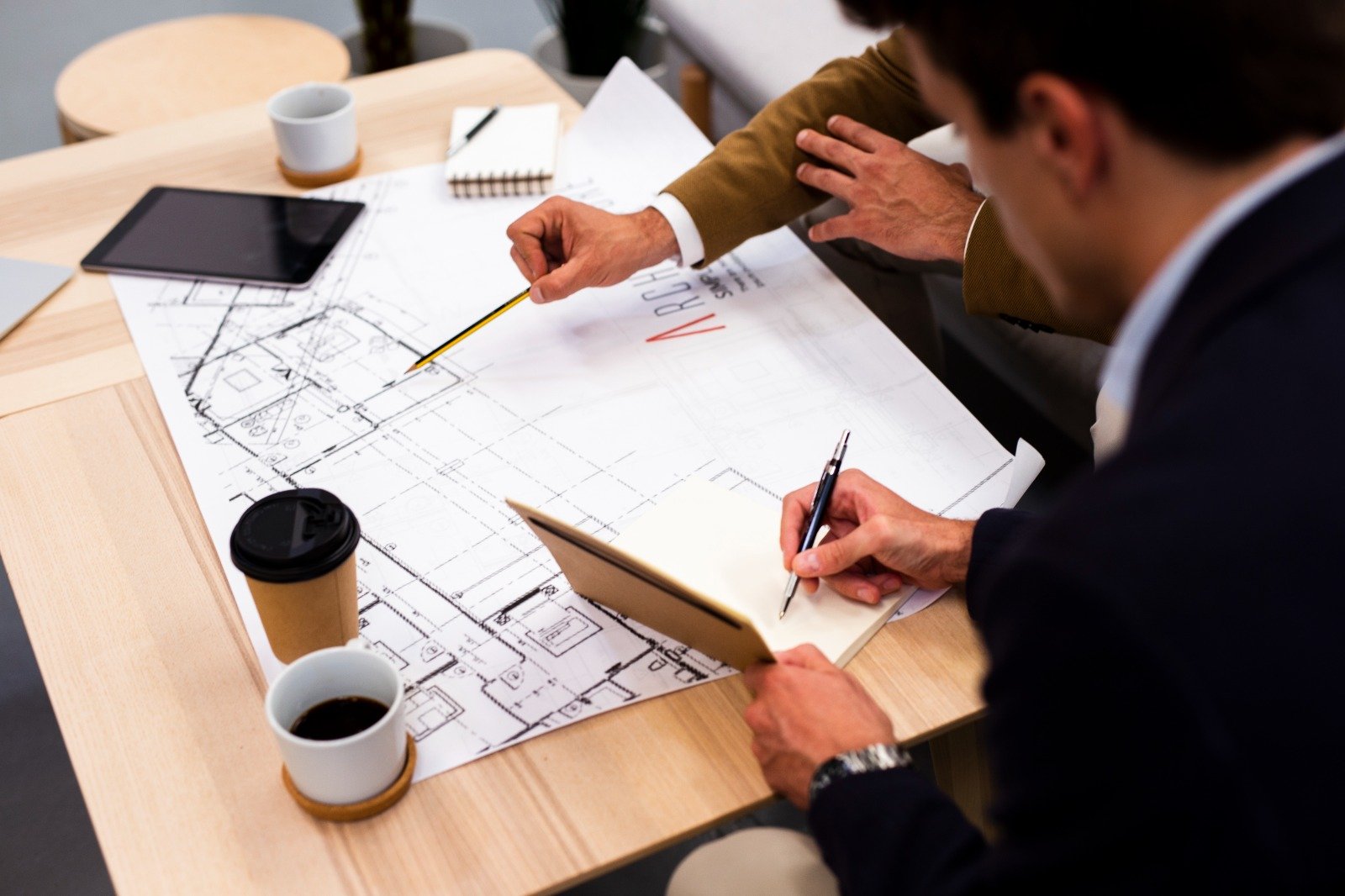CAD drafting and traditional drafting play a significant role. Both methods have their advantages and applications. CAD drafting excels in accuracy and efficiency and is complex too. Traditional designing and drafting services methods can be easier for some people to learn.
CAD offers a wide range of tools and features. These can create accurate and detailed technical drawings. The choice of CAD may depend on the specific requirements of the project. The user’s familiarity with the software and the industry standards are also considerable.
The choice between the two methods depends on the specific needs. It is also dependent on the resources of the project or individual. Here is a comparative analysis of the two approaches:
-
Tools and Techniques:
CAD Drafting: Uses computer software to create precise and detailed technical drawings. It offers digital tools for designing and modifying.
Traditional Drafting: it needs manual tools like pencils. Rulers and drafting boards are used to create drawings. It’s like drawing by hand. Some people find this more engaging and easier.
Precision and Accuracy:
CAD Drafting: it provides a higher level of accuracy. Measurements are exact, and designs are created to scale, reducing errors.
Traditional Drafting: Less precise due to manual processes.
Efficiency and Productivity:
CAD Drafting: Faster and more efficient. Changes can be made easily in the digital environment.
Traditional Drafting: Revisions may require starting over, which is time-consuming.
Complexity and Flexibility:
CAD Drafting: Allows for greater complexity in designs.
Traditional Drafting: Limited flexibility compared to digital methods.
Most popular and widely used CAD software programs
- AutoCAD:
This program is a classic and industry standard. It’s versatile. It offers both basic and advanced drafting tools for drawings.
- SolidWorks & Inventor: Imagine building things on the computer! These programs are great for creating 3D models, especially for mechanical stuff like machines.
- Revit:
This program focuses on buildings. Using this software you can create intricate 3D models of structures. You can include architectural elements like walls and floors. Moreover, you can add mechanical, electrical, and plumbing systems like pipes and wires as well .
- Fusion 360:
This newer program offers a similar toolbox to AutoCAD for both basic and advanced designs.It’s easier on the wallet and accessible online. This makes it a perfect fit for small businesses looking for a cost-effective and convenient drafting solution.
Designing and Drafting Service
Traditional drafting: This requires patience and a keen eye. This also needs a delicate touch, but the results are worth it!
Why some people still love traditional drafting
- Looks Great and Feels Good:
Traditional drawings have a special quality that many designers enjoy. It allows for fine details and lets you get a hands-on feel for your design.
- No Fancy Computer Needed:
You don’t need a powerful computer or special programs to do traditional drafting. Just a pencil and paper will do!
- Saves Money:
This is a budget-friendly option compared to CAD software. There are free tools available that can achieve similar results.
- Easy to Change Things Up:
As you sketch with pen and paper, it’s simple to make changes along the way.
- Sometimes Easier to Understand:
For some ideas, traditional drawings can be clearer than those done on a computer.
Disadvantages of traditional drafting methods
While traditional drafting has its appeal, it also comes with these limitations.
- Takes a Long Time:
- Traditional drafting is slow, especially for complex designs.
- Architects spend many hours carefully creating drawings, which can delay projects.
- Human Errors:
- Hand-drawn drafts can have mistakes.
- Inaccuracies may sneak into the final design due to human slip-ups.
- Copying and Sharing Challenges:
- Replicating traditional drawings for collaboration or distribution isn’t easy.
- Architects often use photocopies or scans, which might affect the original quality.
- Not Great for Teamwork:
- Sharing physical drawings for collaboration can be tricky.
- Being close to the documents is necessary, making remote teamwork harder.
CAD drafting (The New Way)
We can use powerful computer programs to draw plans! These programs can make flat drawings or even 3D models, depending on the project. There are even different programs for different needs, like building plans or 3D models of machines.
Why People Use CAD Software for Design and Drafting
-
Faster and Easier:
CAD software offers a significant advantage for designers. It allows them to work more efficiently. They can produce higher quality designs in less time. Additionally, making revisions to a design is much simpler within a computer-aided drafting program.
-
Fewer Errors:
Using CAD software reduces mistakes compared to drawing by hand.
-
Less Work:
CAD automates many design tasks, so it takes less effort overall. You can also reuse parts of your designs to save time.
-
Sharing Made Easy:
Sharing designs with others is simple with CAD software.
-
Super Accurate:
CAD creates designs that are much more precise than manual drawings.
-
Improved Teamwork:
CAD allows design teams to explore ideas, test them virtually, and document everything clearly. It also helps speed up creating prototypes.

Downsides of Using CAD Software
-
Computer Issues:
Your work can be lost if your computer crashes or gets a virus. There’s also a risk of hacking.
-
Learning Curve:
CAD software offers a powerful skillset, but mastering it takes some practice.
-
Costs:
Buying and maintaining CAD software can be expensive. You need to train your staff to use it. There are also ongoing costs for updates.
-
Job Market:
Some design jobs might become easier with CAD because it can do some things
3D drafting service
See Your Designs Before They’re Built:
3D drafting services let designers create realistic computer models of objects, like prototypes or buildings. This offers some great benefits:
-
See Designs in 3D:
Imagine your design from all angles! 3D drafting lets you see and test your ideas virtually before building anything.
-
Improved Designs:
3D models provide a more realistic view of your project, helping you create a better final product.
-
Easier Communication:
Show your ideas clearly to clients and colleagues using 3D models.
-
Catch Mistakes Early:
Spot any errors in your design before it’s too late with 3D drafting.
-
Work Faster:
3D drafting can streamline the design process, saving you time and effort.
Some Things to Consider:
-
Learning Curve:
3D drafting software can be trickier to learn than 2D software.
-
Costs:
Buying and maintaining the software can be expensive. You might also need powerful computers to run it.
But remember, the best way to draft depends on what you enjoy doing. It also depends on the project you’re working on.
CAD Drafting:
- Pros:
Super accurate and consistent designs, saves time, easy to share and make changes.
- Cons:
Takes time to learn the software, expensive to buy and maintain (including training for your staff).
Traditional Pen-and-Paper Drafting:
- Pros:
Looks nice, no need for special computers or software, saves money on software and hardware.
- Cons:
Takes a long time to do, requires keeping physical copies, more prone to mistakes.
Selecting the Best Option:
The best approach depends on the project’s requirements. Fancy computer-aided drafting offers many benefits. For budget-conscious projects traditional drafting remains a viable option.
Freelance Construction Estimators
It is important to be familiar with both traditional and CAD drafting methods. This quick guide will outline the key differences between the two.
CAD Drafting:
- Pros:
Super accurate and consistent designs with a freelance construction estimator save time, easy to share and make changes.
- Cons:
Takes time to learn the software, expensive to buy and maintain (including training for your staff).
Traditional Pen-and-Paper Drafting:
- Pros:
Looks nice, no need for special computers or software, saves money on software and hardware.
- Cons:
Takes a long time to do, requires keeping physical copies, more prone to mistakes.
Choosing the Right One:
Traditional drafting continues to be a valuable tool. It is good for projects where cost is a major factor. However, CAD offers undeniable benefits in speed and precision. Ultimately, the best method depends on your specific needs.
Conclusion
Analysis shows that both CAD and traditional drafting have their own pros and cons.
CAD Drafting: Think speed, precision, and complex designs. It shines for projects with intricate details, multiple changes, and needing digital sharing. But, there’s a learning curve, and software and training can cost money.
Traditional Drafting: It is a hands-on experience, accessible to everyone, and doesn’t require fancy software. However, it can be time-consuming and less precise. It’s tricky to copy and share.
So, which one to choose? It depends on your project’s needs and resources. Your own skills and preferences are also very important. Consider all the factors before choosing the best method for the job. As technology advances, CAD might become more popular, but traditional drafting still holds value. Both methods are valuable tools in the drafting and design world.


